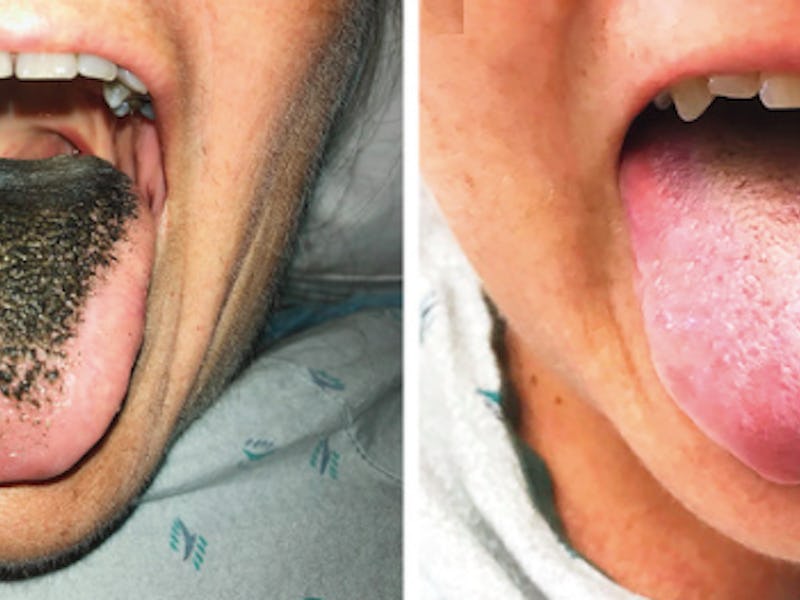Woman Develops "Black Hairy Tongue" After Antibiotic Use Goes Wrong
"It was a dramatic presentation."

The tongue, the muscular organ that slaps and salivates inside your mouth, is supposed to be pink. Its rosy appearance is due to the tissue mucosa; its rough texture generated by tiny bumps called papillae. But sometimes the tongue can be coated in wooly blackness and that’s when you have a problem on your metaphorical hands. This condition is, appropriately, called “black hairy tongue” and it recently plagued a 55-year old woman treated in Missouri.
Doctors from Washington University in St. Louis described her case Thursday in a study published in The New England Journal of Medicine. They write that the woman was brought to their hospital after her legs were severely crushed in a car accident. Subsequently, a polymicrobial wound infection developed and she was treated with antibiotics. The doctors believe that one of the antibiotics, called minocycline, caused her tongue to develop the signature blackness.
“It was a dramatic presentation,” co-author Yasmir Hamad, M.D., told Inverse. “Literally a textbook case. It has great educational value for physicians and for the public.”
Luckily black hairy tongue is a benign condition, so it didn’t put the patient in any pain, despite the discoloration and elongation of her tongue’s filiform papillae. Occasionally, the condition is caused by poor oral hygiene, irritating mouthwashes, and the use of tobacco. In a 2006 case, also described in the The New England Journal of Medicine, an 85-year-old cigar smoker let his black hairy tongue persist for “several years.”
The woman's tongue, before and after treatment.
The exact pathogenesis that causes black hairy tongue, also known as lingua villosa, is not known. But the best treatment that doctors have is helping patients get their mouths clean.
“Black hairy tongue is usually reversible and has no long-term sequelae [or pathology] as long as the precipitating agent is discontinued and the patient practices good oral hygiene,” Hamad and co-author David Warren, M.D., write. “In this patient, minocycline was discontinued and an alternative antimicrobial regimen was started. She was advised to practice good oral hygiene.”
Four weeks later, her tongue turned back to its typical pink. The buildup of dead skin cells on the surface of her tongue, a result of her condition, was gone.